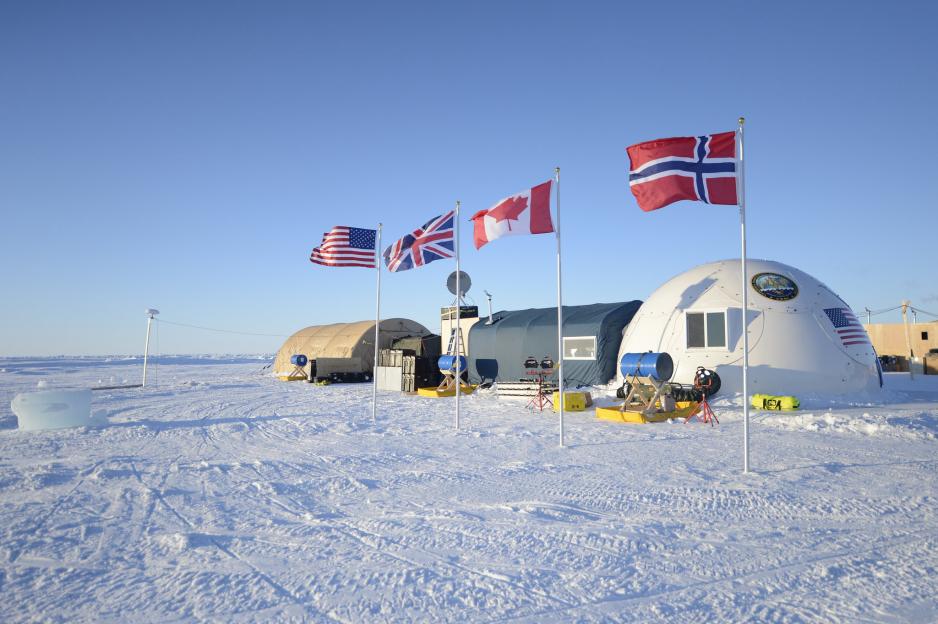Updated US Arctic defense strategy addresses new security environment

As the US enters its final months of the Arctic Council chairmanship, the Department of Defense (DoD) releases an updated strategy for the Arctic underlining frictions and challenges in the region.
The new strategy that was released last week, "Report to Congress on Strategy to Protect United States National Security Interests in the Arctic Region" is an updated version of the previous DoD Arctic Strategy from 2013. The new strategy offers more details on how to achieve US interests in the region, as well as identifying shortcomings, challenges and friction points in the Arctic.
Bipartisan push for a “more serious military strategy” in the Arctic
The update of the strategy follows a bipartisan push in the Senate Armed Services Committee for a more detailed and robust defense strategy in the region. Senators Dan Sullivan (R-AK) and Angus King (I-ME) sponsored an amendment to the FY2016 National Defense Authorization Act (NDAA) requiring an updated military strategy for the protection of United States national security interests in the Arctic region.
"After nearly two years of advocacy and bipartisan efforts, I am pleased that we finally have a much more serious military strategy for the Arctic region," said Senator Sullivan in a press release.
Changes in the international security environment
The abstract of the strategy document states that it has been updated "in light of the changes in the international security environment." The document never defines clearly what these changes are, but unlike the 2013 Strategy, it goes into the current Arctic security environment and possible friction points among Arctic nations, as well as outside actors.
The Strategy includes a section with a short description of each Arctic nation’s main goals in the region, and identifies areas of disagreement. Most notably, it identifies disagreement with Canada and Russia over regulation of Arctic waters under their jurisdiction. Canada claims the Northwest Passage to be historic internal waters, requiring Canada’s permission to transit. Russia has a similar historic internal waters claim on some areas along the Northern Sea Route, setting out specific regulations, permits and requirements for ships transiting through. The US (and a number of other nations) has protested these claims, arguing that they are inconsistent with international law.
As these sea routes see increasing ship traffic due to diminishing sea ice, these issues are likely to become more pressing.
From brochure to actual strategy
At an event on US security concerns in the Arctic at the Centre for Strategic and International Studies (CSIS) on January 24 Senator Sullivan called the 2013 DoD Strategy a "brochure" and criticized it for lacking substance and details regarding operational plans and the associated military requirements for the protection of US national security interests in the region. The Senator described the updated strategy as a dramatic improvement from the 2013 version, particularly when it comes to identifying friction points with Russia.
Concerns over Russian activity in the Arctic
At the event, Sullivan voiced his concerns over Russian activities in the Arctic, which he described as a "militarization" of the region. This was also brought up in the following discussion between CSIS’s Heather Conley, Hoover Institution’s Admiral Gary Roughead and former Deputy Assistant Secretary of Defense for European and NATO Policy, James Townsend, who discussed Russia’s intentions in the region.
"Russia wants to ensure its strategic space in the Arctic. It wants to be the controller of the Northern Sea Route and to be assured that it has access to the resources in the region," said Adm. Roughead.
International cooperation
The updated strategy also goes into some detail about the importance of regional and international cooperation on a number of areas, including defense. The Strategy requires DoD to "be capable of operating safely and effectively in the Arctic region and responding to a wide range of challenges to US national interests in conjunction with other nations when possible and independently if necessary."
The Strategy particularly points to robust military cooperation with the Nordic countries, such as extreme cold weather training and air operations training in Arctic conditions. It further underscores that military-to-military engagements will reduce the potential for friction and miscalculation, but does not mention any form of defense cooperation with Russia in the Arctic. All military-to-military cooperation between NATO and Russia was suspended following the annexation of Crimea in the spring of 2014.
Gaps in Arctic capabilities and resources
Unlike the 2013 Strategy, the updated version points to areas where the US has limited capabilities in the Arctic. These gaps include limited infrastructure, limited satellite and terrestrial communications, lack of navigational aide and lack of personnel recovery capability, to mention a few.
Implementation up to Congress and the new Administration
"This strategy (...) is only one component of what must become a broader policy," said Senator Angus King in a statement, adding that "it is up to Congress and the new administration to develop and implement that comprehensive policy in an expedited manner."
So far the Trump administration has been mostly silent on the Arctic. Senator Sullivan pressed the newly appointed Secretary of Defense General Mattis on the limited engagement of the US in the Arctic and Russia’s activities during his confirmation hearing in January. General Mattis responded that America has global responsibilities and that "it is not to our advantage to leave any of those areas of the world absent from our efforts."
